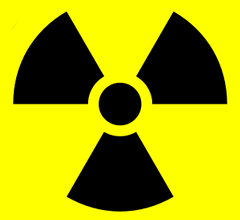This is the international symbol for radiation. If you see this symbol, there are probably radioactive materials nearby.
Click on image for full size
Original artwork by Windows to the Universe staff.
Radioactive
Some materials give off radiation. We call those materials "radioactive". Radioactive materials are often dangerous to people and other living things.
There are many different kinds of radioactive materials. Some give off particle radiation, like alpha or beta particles or neutron radiation. Some give off electromagnetic radiation, such as gamma rays or X-rays.
Most elements come in various "versions", called isotopes. Some isotopes are radioactive. Other isotopes are not. Isotopes that are not radioactive are called "stable" isotopes. During radioactive decay, a radioactive isotope gives off some type of radiation. The isotope is transformed into a different isotope or sometimes into a different element. For example, carbon-14 is a rare isotope of carbon. Carbon-14 is radioactive. When a carbon-14 atom decays, it gives off a beta particle. The carbon-14 atom is transformed into a nitrogen atom.
Radioactive isotopes can be dangerous to living things. They can also cause damage to equipment such as electronics. Radioactive isotopes are not always dangerous, though. Some only give off tiny amounts of radiation. There are radioactive isotopes in nature all around us. Most of them cause us little or no harm.
Humans make use of radioactive materials in many ways. We use them in medicine to treat cancer. We use them to find out how old artifacts are by using carbon-14 dating. We also use them for nuclear power and in nuclear weapons.
You might also be interested in:
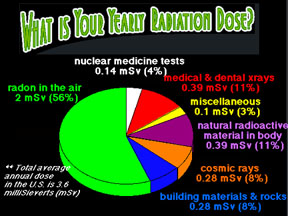
Radiation comes in two basic types: electromagnetic radiation transmitted by photons, and particle radiation consisting of electrons, protons, alpha particles, and so forth. Electromagnetic radiation,
...more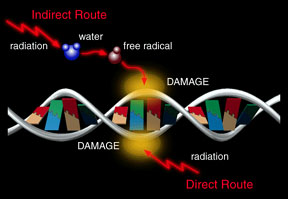
Radiation can be harmful to living creatures. Radiation can harm living things directly by damaging their cells. The cells might stop functioning, or they might be unable to reproduce. Radiation can also
...more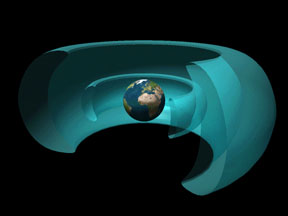
One main type of radiation, particle radiation, is the result of subatomic particles hurtling at tremendous speeds. Protons, cosmic rays, and alpha and beta particles are some of the most common types
...more
Electromagnetic radiation is the result of oscillating electric and magnetic fields. The wave of energy generated by such vibrations moves through space at the speed of light. And well it should... for
...more
An element (also called a "chemical element") is a substance made up entirely of atoms having the same atomic number; that is, all of the atoms have the same number of protons. Hydrogen, helium, oxygen,
...more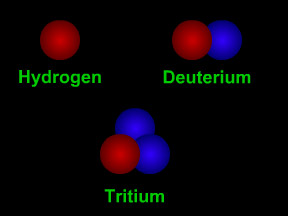
Isotopes are different "versions" of an element. All atoms of an element have the same number of protons. For example, all hydrogen atoms have one proton, all carbon atoms have 6 protons, and all uranium
...more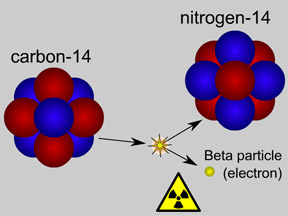
Some materials are radioactive. They emit radiation. When an atom of a radioactive substance gives off radiation, it becomes a new type of atom. This process is called radioactive decay. There are two
...more


